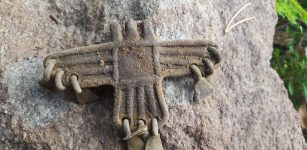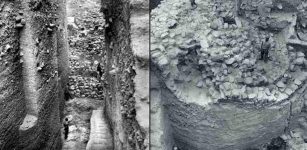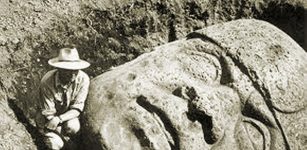Biblical Tefach: Amazing ‘Common Constant’ Found Among Ancient Storage Jars In Israel
Conny Waters – MessageToEagle.com – The fragments of various storage jars of different types and sizes had been uncovered over the years, and they played an important role in the daily life of the ancient people.
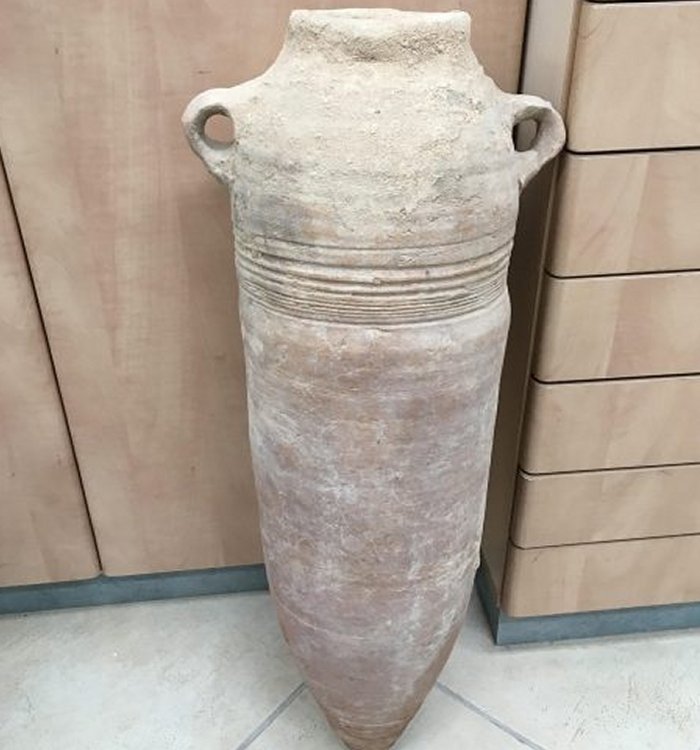 A ‘Gaza’ or ‘Ashkelon jar’ of the sort found at the site in Gedera. (source: WikiCommons)
A ‘Gaza’ or ‘Ashkelon jar’ of the sort found at the site in Gedera. (source: WikiCommons)
Israeli archeologists Hebrew University of Jerusalem’s Ortal Harush, Israel Antiquities Authority’s Avshalom Karasik, and Weizmann Institute’s Uzy Smilansky have now studied jars found in Khirbet Qeiyafa.
The archaeologists have found an “astonishing common denominator” among storage jars in Israel from a 350 years period: the inner-rim diameter of the jars’ necks, as they say.
“The distribution of this diameter is consistent with measurements of the palm of a (male) hand and, according to the authors, this match is not coincidental.
It may reflect the use of the original metrics for the biblical measurement of the “tefach.”
A unit of measurement that was used primarily by ancient Israelites, appears frequently in the Bible, and is the basis for many Jewish laws.
“It was natural for the ancient potters to adopt the handbreadth—tefach—standard. It was a unit of length that was widely used in ancient times, and is mentioned both in Assyrian and Egyptian sources and in the Old Testament, for instance: Numbers 25-25, Numbers 37-12,” the researchers explained.
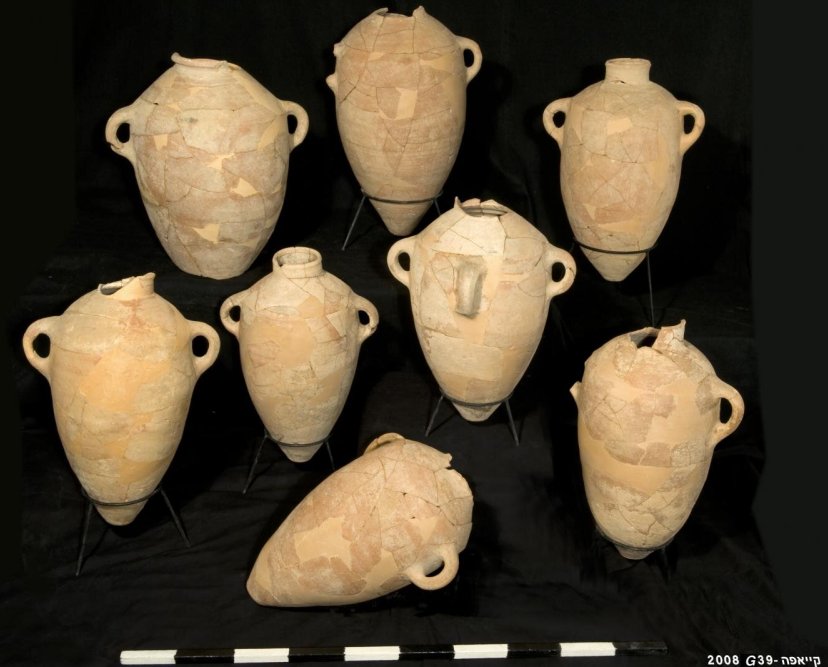 Storage jars from Khirbet Qeiyafa From IAA. Credit Clara Amit at Israel Antiquities Authority
Storage jars from Khirbet Qeiyafa From IAA. Credit Clara Amit at Israel Antiquities Authority
The team did 3-D scans of 307 Iron-Age jars found in Khirbet Qeiyafa (Judah Kingdom; early 10th century BC), “hippo” jars from northern Israel (Israelite Kingdom, 9th Century BC—nicknamed for their large size and loop handles which resemble hippopotamuses) and royal Judah Kingdom storage jars (8-7th Century BC).
The researchers observed large variations between the jars—even those from the same time period and geographic region.
Only one measure remained constant:
the averaged inner-rim diameter which always measured, with a standard deviation, between 8.85 and 8.97 centimeters.
There are many theories regarding this puzzle.
 Bird’s Eye View of Khirbet Qeiyafa – Courtesy of Khirbet Qeiyafa Expedition
Bird’s Eye View of Khirbet Qeiyafa – Courtesy of Khirbet Qeiyafa Expedition
The archaeologists obtained data on the standard measure of a modern man’s palm, the team tapped measurements taken by the USA Army when ordering gloves for their soldiers, the mean value being 8.67±0.48 cm, which is consistent with the measurements taken from the ancient jars. However, there is another ancient aspect that may explain the connection between uniform neck diameters.
It is based on the highly-regarded and observed purity laws in The Old Testament. The Book of Numbers deals with the question: What is the status of jars that were left in the vicinity of a corpse—are they impure or pure?
“This is the law, if a man dies in a tent, anyone entering the tent and anything in the tent shall be unclean for seven days. Any open vessel which has no seal fastened around it becomes unclean.” (Numbers 19: 14-15)
In his Code of Jewish Law called the “Mishnah Torah”, Maimonides says that the Tefach was the size of the opening of a ceramic jar.:
“According to the Oral Tradition, it was taught that the verse is speaking only about a ceramic container, for it is a container that contracts impurity only through its opening.”
Written by Conny Waters – MessageToEagle.com – AncientPages.com Staff Writer






